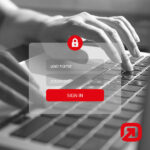Indoor navigation using beacons is suitable for many purposes and has a lot of advantages. Many of our customers work with beacons. But there are always some frequently asked questions and uncertainties. In this article we would like to answer some questions concerning range, accuracy, application scenarios and battery life and show you different types of beacons. Furthermore, we tell you more about Beacon Alive, infsoft’s beacon management platform for large spaces.
RANGE, ACCURACY, APPLICATION SCENARIOS AND BATTERY LIFE OF BEACONS
Bluetooth Low Energy (Bluetooth LE, Bluetooth Smart, BLE) is an energy saving radio technology which has become popular since 2009. The range is about 10-30 meters inside buildings, the accuracy is up to one meter. Bluetooth can be used indoors and outdoors with server or client based applications and works cross-platform.
Usually, beacons run on batteries which have to be replaced after a maximum of 5-10 years – depending on the transmission interval and –strength. Some beacons can be connected to the domestic electrical system or lamps and get their energy here. Beacons with an integrated motion sensor can switch themselves off for energy saving when the object they are attached to doesn’t move for a specific time.
Beacons are easy to install (stick, screw) and thus are perfect for exceptional and temporary environments. They cost about 3-30 Euros. Beacons are available with various cases fulfilling diverse IP protection classes. For example they could be suitable for outdoor usage, waterproof and dust-proof.
TYPES OF BEACONS – EDDYSTONE AND IBEACON
The most important beacon types on the market are from Apple (iBeacon) and Google (Eddystone).
iBeacons have been introduced in 2013 and have caused a boom in beacon technology. They transmit a unique ID which can be received and interpreted by mobile apps on all devices which support BLE. By the means of fingerprinting and trilateration the position of a device in a room can be detected and indoor navigation can be realized. iBeacons are very popular. They need an external database or an app to be used meaningfully.
Eddystone has been put on the market by Google in 2015 and can be used open source. They can transmit a unique ID, a URL and sensor data. Smartphones don’t need a special app to receive the URL – which creates whole new opportunities for proximity marketing. Sensor data about humidity, noise, air pollution and temperature can for example be used to send a notification if the temperature exceeds a certain value.
ADVANTAGES OF A BEACON MANAGEMENT PLATFORM
A beacon management platform can help maintain a large area equipped with beacons. Our client SBB (Swiss Federal Railways) uses “Beacon Alive”, which is integrated into infsoft’s Calibration Tools, to manage approximately 1,200 beacons at Zurich central railway station. For example it is possible to check the battery status of the beacons and to send a notification if it falls below a certain value. The management platform also shows in a map when a beacon was last seen. This simplifies the replacement of broken hardware significantly. It is also possible to locate beacons through the platform automatically, which makes it easier to install the beacons. Parameter setting (transmission interval, -duration and –strength) works with most beacon types.
infsoft doesn’t sell beacons, but we are happy to advise you and establish contact to distributors. Contact us. Here you can learn more about indoor positioning with beacons.
The beacon shown in the image comes from estimote.






